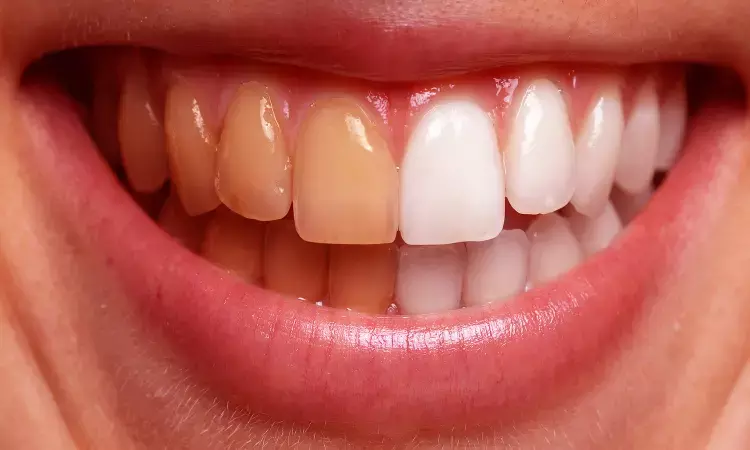- Home
- Medical news & Guidelines
- Anesthesiology
- Cardiology and CTVS
- Critical Care
- Dentistry
- Dermatology
- Diabetes and Endocrinology
- ENT
- Gastroenterology
- Medicine
- Nephrology
- Neurology
- Obstretics-Gynaecology
- Oncology
- Ophthalmology
- Orthopaedics
- Pediatrics-Neonatology
- Psychiatry
- Pulmonology
- Radiology
- Surgery
- Urology
- Laboratory Medicine
- Diet
- Nursing
- Paramedical
- Physiotherapy
- Health news
- Fact Check
- Bone Health Fact Check
- Brain Health Fact Check
- Cancer Related Fact Check
- Child Care Fact Check
- Dental and oral health fact check
- Diabetes and metabolic health fact check
- Diet and Nutrition Fact Check
- Eye and ENT Care Fact Check
- Fitness fact check
- Gut health fact check
- Heart health fact check
- Kidney health fact check
- Medical education fact check
- Men's health fact check
- Respiratory fact check
- Skin and hair care fact check
- Vaccine and Immunization fact check
- Women's health fact check
- AYUSH
- State News
- Andaman and Nicobar Islands
- Andhra Pradesh
- Arunachal Pradesh
- Assam
- Bihar
- Chandigarh
- Chattisgarh
- Dadra and Nagar Haveli
- Daman and Diu
- Delhi
- Goa
- Gujarat
- Haryana
- Himachal Pradesh
- Jammu & Kashmir
- Jharkhand
- Karnataka
- Kerala
- Ladakh
- Lakshadweep
- Madhya Pradesh
- Maharashtra
- Manipur
- Meghalaya
- Mizoram
- Nagaland
- Odisha
- Puducherry
- Punjab
- Rajasthan
- Sikkim
- Tamil Nadu
- Telangana
- Tripura
- Uttar Pradesh
- Uttrakhand
- West Bengal
- Medical Education
- Industry
Bleaching agents may change surface micro-morphology of enamel, Finds study

It has been recently noted that bleaching with 38% Hydrogen Peroxide (HP) and 16% Carbamide Peroxide (CP) resulted in mild changes in surface micro-morphology of enamel, according to a study published in the Journal of College of Physicians And Surgeons Pakistan.
Bleaching treatment is in high demand by patients, and it is considered as part of most esthetic dental treatments. Despite the tooth whitening esthetic benefits, some side-effects have been reported, including Tooth sensitivity and structural changes such as microhardness (MH) reduction and increased roughness. Nevertheless, there is little information in the literature evaluating the effect of home-use bleaching agents containing 16% Carbamide Peroxide (CP) and in-office bleaching agent with 38% Hydrogen Peroxide (HP) on surface micro-morphology of enamel.
Hence, Nazish Fatima from the Ziauddin University conducted the present study to assess the efficacy of home bleaching agents. The author set up an experimental study on forty- five-sound human third molar crowns, all of which were extracted for periodontal reasons.
The discs were prepared at Material Engineering Department of NED University of Engineering and Technology, Karachi, and surface morphology was analyzed at Centralized Science Laboratory of Karachi University, Pakistan. Longitudinal sections were made using diamond disks (0.2 mm) underwater lubrication to obtain enamel slabs measuring (3 mm x 3 mm).
The slabs were embedded in polystyrene resin by using 2.0 cm diameter PVC molds, leaving the outer enamel surface uncovered by the resin. Ninety dental enamel slabs were prepared. The slabs were then randomly divided into 3 groups. Each group contained thirty specimens (n=30). Group 1 was kept in artificial saliva at 37°C in an incubator (Memart, Germany) during the whole experiment. Group 2 was treated with power whitening gel (White Smile 2011, Germany). Group 3 was treated with a tooth whitening pen (White Smile 2011, Germany).
The most central region or the region that was most representative of the entire surface area was used. The SEM (Jeol-Japan-JSM6380A, JAPAN) micrographs were examined to determine the type of surface presented. The enamel changes were classified as no or mild alteration, moderate alteration, and severely altered surface.
The results revealed that regarding micro-morphology, the enamel surface of control groups showed a smooth surface in general with some scattered clear scratches due to the polishing procedure. The specimens bleached in group 2 and group 3, represented areas of mild erosion.
This led the author to conclude that "bleaching with 38% Hydrogen Peroxide (HP) and 16% Carbamide Peroxide (CP) resulted in mild changes in surface micro-morphology of enamel."
Dr. Nandita Mohan is a practicing pediatric dentist with more than 5 years of clinical work experience. Along with this, she is equally interested in keeping herself up to date about the latest developments in the field of medicine and dentistry which is the driving force for her to be in association with Medical Dialogues. She also has her name attached with many publications; both national and international. She has pursued her BDS from Rajiv Gandhi University of Health Sciences, Bangalore and later went to enter her dream specialty (MDS) in the Department of Pedodontics and Preventive Dentistry from Pt. B.D. Sharma University of Health Sciences. Through all the years of experience, her core interest in learning something new has never stopped. She can be contacted at editorial@medicaldialogues.in. Contact no. 011-43720751
Dr Kamal Kant Kohli-MBBS, DTCD- a chest specialist with more than 30 years of practice and a flair for writing clinical articles, Dr Kamal Kant Kohli joined Medical Dialogues as a Chief Editor of Medical News. Besides writing articles, as an editor, he proofreads and verifies all the medical content published on Medical Dialogues including those coming from journals, studies,medical conferences,guidelines etc. Email: drkohli@medicaldialogues.in. Contact no. 011-43720751


